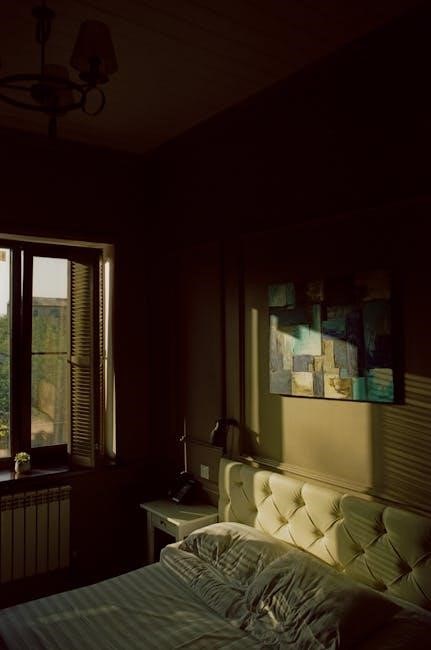Painting vinyl shutters is a cost-effective way to refresh your home’s exterior․ With proper preparation and the right materials, you can achieve a durable, vibrant finish․
Overview of Vinyl Shutter Painting
Painting vinyl shutters is a straightforward process that enhances your home’s curb appeal․ Vinyl shutters are durable and low-maintenance, making them ideal for exterior use․ However, over time, they may fade or become discolored․ Painting them with the right materials can restore their appearance and add a fresh, personalized touch․ The process involves cleaning, preparing the surface, and applying high-quality, vinyl-safe paint․ It’s important to use acrylic latex paint, as it adheres well and remains flexible with temperature changes․ Proper techniques ensure a smooth, even finish, while avoiding common mistakes like using oil-based paints or dark colors that can cause warping․ With careful planning, you can achieve professional-looking results․
Importance of Proper Preparation
Proper preparation is crucial for a successful vinyl shutter painting project․ Vinyl surfaces are smooth and non-porous, making it difficult for paint to adhere without adequate preparation․ Cleaning the shutters thoroughly removes dirt, grime, and mildew, ensuring a strong bond between the surface and the paint․ Additionally, light sanding or the use of a primer can create a better texture for paint adhesion․ Removing the shutters from the wall prevents overspray and allows for even coverage․ Skipping these steps can lead to peeling or uneven results․ Preparation also involves inspecting for damage and addressing any issues before painting, ensuring a professional-quality finish․

Preparing for the Painting Process
Cleaning the shutters with mild detergent and water removes dirt and grime․ Removing the shutters ensures better access and prevents paint from getting on the wall․ Sanding lightly smooths the surface for optimal paint adhesion․ Addressing any damage or holes is essential before painting․ Allowing the shutters to dry completely after cleaning and sanding ensures a smooth finish․ Proper preparation sets the foundation for a successful and long-lasting paint job, enhancing the appearance of your home’s exterior․
Cleaning the Vinyl Shutters
Cleaning vinyl shutters is a crucial step before painting․ Start by removing dirt, grime, and mildew using a mild detergent mixed with warm water․ Use a soft-bristle brush or sponge to scrub the shutters gently, ensuring all surfaces are covered․ Avoid using harsh chemicals or abrasive cleaners, as they can damage the vinyl․ Rinse thoroughly with clean water to remove soap residue․ For tougher stains, a mixture of equal parts water and white vinegar can be effective․ Allow the shutters to dry completely in a shaded area to prevent warping from direct sunlight․ Proper cleaning ensures better paint adhesion and a smoother finish․
Removing the Shutters for Painting
Removing vinyl shutters ensures a professional-grade paint job without overspray or uneven coverage․ Start by checking if your shutters are held by screws or shutter loks․ For screws, remove them using a screwdriver․ If using shutter loks, gently pull the shutter away from the wall and cut the plastic mounting nails with a hacksaw․ Once removed, use pliers to extract any remaining nail fragments and fill the holes with caulk․ Lay the shutters flat on a drop cloth to prepare for painting․ This method prevents paint from pooling and ensures all edges are accessible for a uniform coat․

Choosing the Right Paint for Vinyl Shutters
Selecting the right paint is crucial for a durable finish․ Use 100% acrylic latex paint, as it adheres well and remains flexible․ Avoid oil-based paints, which may peel․
Types of Paint Suitable for Vinyl
When painting vinyl shutters, the best option is 100% acrylic latex paint, as it adheres well and remains flexible․ Specialty vinyl-safe paints are also recommended․ Avoid oil-based paints, as they may peel or crack․ For a durable finish, choose exterior-grade products designed for plastic surfaces․ Some brands offer spray paints specifically formulated for vinyl, such as Krylon Fusion All-In-One, which bonds strongly and dries quickly․ Always ensure the paint is labeled as suitable for vinyl to avoid damaging the material․ Proper adhesion and flexibility are key to a long-lasting result․
Selecting the Appropriate Color
Choosing the right color for your vinyl shutters is crucial for curb appeal․ Lighter shades are ideal, as dark colors can cause warping due to heat absorption․ Consider your home’s exterior, such as siding and trim, to ensure color harmony․ Neutral tones like white, gray, or beige are popular and versatile․ If you prefer something bolder, opt for muted or pastel colors to avoid overwhelming the facade․ Always check the manufacturer’s guidelines to confirm the color won’t void any warranties․ Test samples on a small area before committing to ensure the final look aligns with your vision and enhances your home’s aesthetic․

Application Methods for Vinyl Shutters
Painting vinyl shutters can be done with brushes, sprayers, or rollers for even coverage․ Each method offers a smooth finish and efficient application, ensuring durability and a professional look;
Painting with a Brush
Painting vinyl shutters with a brush is a precise method that ensures detailed coverage, especially for intricate designs or small surfaces․ Use a high-quality nylon or polyester brush, as these materials work best with acrylic latex paints․ Dip the brush into the paint, ensuring even coating, and apply light, smooth strokes․ Work in shaded areas to prevent the shutters from heating up, which can cause paint to dry too quickly․ Avoid heavy layers, as this may lead to drips or uneven finishes․ Allow each layer to dry completely before applying additional coats for a professional-looking result․
Using a Paint Sprayer
Using a paint sprayer offers a quick and efficient way to paint vinyl shutters, ensuring even coverage and a smooth finish; Start by setting up a well-ventilated workspace, preferably outdoors, and lay the shutters on a drop cloth․ Prime the sprayer with your chosen vinyl-safe acrylic paint, holding the nozzle 6-8 inches away․ Move the sprayer in steady, side-to-side motions, overlapping each pass by about 50% to ensure full coverage․ Apply two thin coats, allowing the first to dry completely before the second․ This method is ideal for large or detailed shutters, providing a professional-quality result with minimal effort and time․
Roller Painting Techniques
Roller painting is an efficient method for covering large, flat areas of vinyl shutters․ Use a high-quality roller with a short nap length (1/4 inch) for smooth surfaces․ Dip the roller into the paint tray, ensuring even coverage without excess․ Apply thin, uniform layers, working in sections to maintain even distribution․ Avoid pressing too hard, as this can cause paint to seep into recesses․ Allow each coat to dry completely before applying the next․ For best results, use a vinyl-safe acrylic paint and work in a shaded area to prevent rapid drying․ Clean rollers with water if using latex-based paints for optimal reuse․
Drying and Curing Process
Allow the paint to dry completely between coats, typically 24-48 hours, depending on environmental conditions․ Proper curing ensures durability and prevents peeling․
Allowing Paint to Dry Completely
Proper drying is crucial for a durable finish․ Allow the first coat to dry completely, typically 24-48 hours, depending on temperature and humidity․ Avoid direct sunlight, as it can cause the paint to dry too quickly, leading to uneven results․ Use a high-quality acrylic latex paint, as it adheres well to vinyl and dries faster than oil-based paints․ Ensure the shutters are laid flat or hung securely to prevent drips․ Lightly touch the surface to confirm dryness before applying a second coat or reinstallation․ Proper curing ensures the paint adheres correctly and resists cracking or peeling over time․
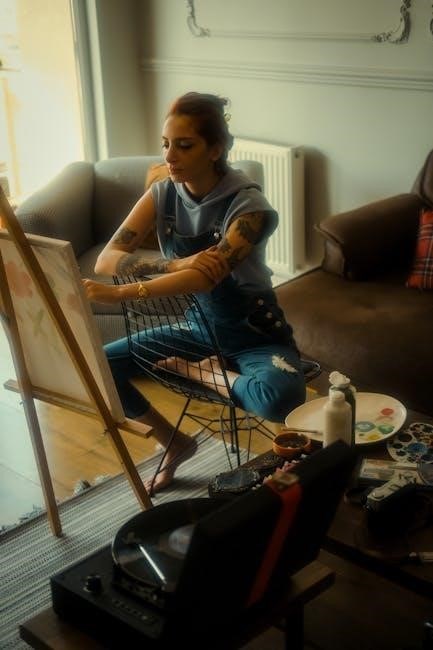
Advanced Tips for Painting Vinyl Shutters
For a professional finish, avoid dark colors to prevent warping․ Use vinyl-safe paints and apply thin, even coats for optimal adhesion and durability․
Avoiding Dark Colors to Prevent Warping
When painting vinyl shutters, it’s crucial to avoid using dark colors, as they can cause the material to warp due to heat absorption․ Vinyl expands and contracts with temperature changes, and dark hues intensify this effect, leading to potential damage․ Lighter colors reflect sunlight and heat, reducing the risk of warping․ If you prefer a darker shade, ensure the paint is specifically designed for vinyl and apply thin, even coats․ Otherwise, stick to lighter tones to maintain the shutters’ structural integrity and appearance․ This simple precaution ensures a long-lasting, professional finish for your home’s exterior․ Proper color selection is key to success․
Touching Up Screw Heads
Touching up screw heads is a final step to ensure a polished look after painting vinyl shutters․ Use a small, high-quality paintbrush to carefully apply paint to the screw heads, blending them with the surrounding area․ This step is essential for maintaining the shutters’ aesthetic appeal and protecting the hardware from rust or corrosion․ Apply thin, even coats, allowing each to dry before adding more․ For best results, use the same paint as the shutters to ensure color consistency․ Properly touched-up screw heads enhance the overall appearance and durability of the shutters, making your home exterior look well-maintained and freshly updated․
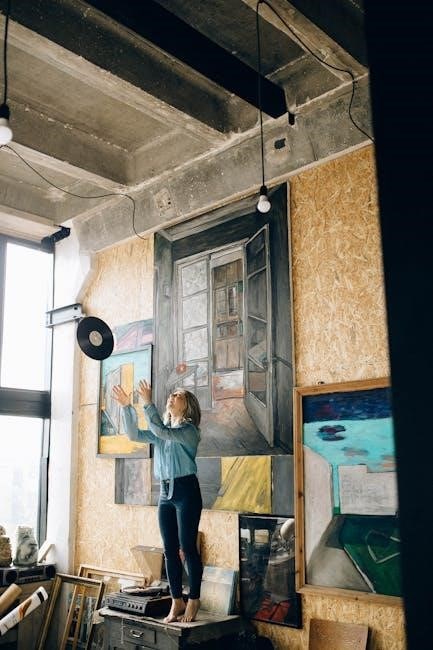
Reinstalling the Painted Shutters
Reinstalling painted vinyl shutters requires careful handling to avoid damaging the finish․ Ensure they are completely dry, then reattach them securely, checking for proper fit and alignment․
Aligning the Shutters Properly
Aligning the shutters correctly is crucial for both functionality and aesthetics․ Start by ensuring each shutter is properly centered on the window frame․ Use a level to check if the shutters are straight and evenly spaced․ If your shutters were previously marked, refer to those markings for accurate placement․ Gently slide the shutters back into their original mounting brackets, making sure they fit snugly without forcing them․ Double-check the alignment from a distance to ensure they appear uniform․ Proper alignment prevents uneven wear and ensures the shutters operate smoothly, maintaining the integrity of your home’s exterior design․
Securing the Shutters Back in Place
Once the shutters are properly aligned, secure them firmly to ensure stability․ Use the original mounting hardware or replace it if necessary․ Tighten screws or bolts gradually, starting from the top and working your way down to avoid warping․ For shutters with plastic mounting nails, ensure they are fully seated and secure․ If you filled holes during removal, use a dab of exterior adhesive to reinforce the hold․ Double-check that all fasteners are snug but avoid overtightening, which could damage the vinyl․ Proper securing ensures the shutters remain in place through various weather conditions, maintaining both functionality and appearance․

Maintenance and Upkeep
Regularly clean painted shutters with a mild detergent to maintain their appearance․ Inspect for paint damage and touch up as needed to preserve durability and color integrity․
Cleaning Painted Shutters
Regular cleaning of painted vinyl shutters is essential to maintain their appearance and durability․ Use a mild detergent mixed with warm water and a soft, non-abrasive cloth or sponge to wipe down the shutters․ Avoid using harsh chemicals, abrasive cleaners, or high-pressure washes, as these can damage the paint or the vinyl surface․ Focus on removing dirt, dust, and mildew, especially in areas around the edges and louvers․ For tougher stains, lightly scrub with a soft-bristled brush․ Rinse thoroughly with clean water and allow the shutters to air dry․ Regular cleaning prevents dirt buildup and ensures the paint finish remains vibrant and intact․
Inspecting for Paint Damage
Regularly inspecting painted vinyl shutters for damage is crucial to maintain their appearance and functionality․ Look for cracks, peeling, or fading paint, which can occur due to weather exposure or wear․ Check for areas where the paint may have chipped or bubbled, especially around edges or louvers․ If left unaddressed, these issues can lead to further deterioration․ Inspect the shutters at least twice a year, ideally after harsh weather seasons․ Address any damage promptly by lightly sanding and repainting affected areas․ This proactive approach ensures the paint remains protective and visually appealing, preserving the shutters’ integrity and your home’s curb appeal․
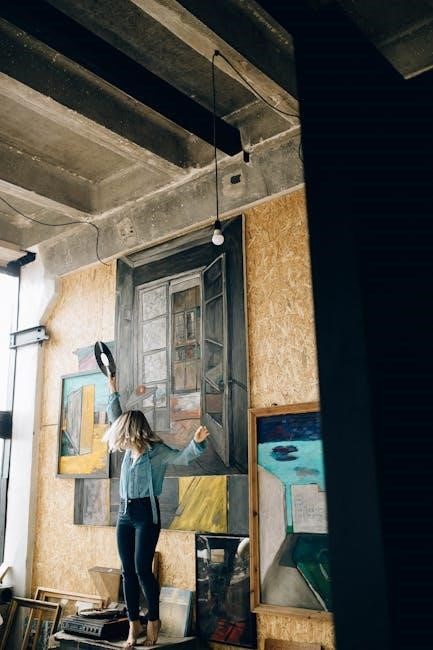
Common Mistakes to Avoid
Using oil-based paints and painting in direct sunlight are common mistakes․ Oil-based paints don’t adhere well to vinyl, and sunlight can cause uneven drying and damage․
Using Oil-Based Paints
Using oil-based paints on vinyl shutters is a common mistake that can lead to poor results․ Oil-based paints do not adhere well to vinyl surfaces, resulting in peeling and cracking over time․ Vinyl expands and contracts with temperature changes, and oil-based paints lack the flexibility to accommodate this movement․ This causes the paint to flake off prematurely․ Additionally, oil-based paints are more prone to cracking and fading, especially when exposed to sunlight and weather․ For optimal durability and adhesion, it is recommended to use acrylic latex or vinyl-specific exterior paints instead․ Avoiding oil-based paints ensures a longer-lasting and more professional finish․
Painting in Direct Sunlight
Painting vinyl shutters in direct sunlight can cause the paint to dry too quickly, leading to uneven texture and inadequate adhesion․ Vinyl surfaces absorb heat, which accelerates evaporation and prevents proper curing․ This results in a rough, streaked finish and reduces the paint’s durability․ It is advisable to paint in shaded areas or during cooler parts of the day to ensure even drying․ Avoiding direct sunlight helps prevent warping of the vinyl and ensures a smooth, professional finish․ Proper drying conditions are essential for maintaining the integrity of the paint and the shutters themselves․
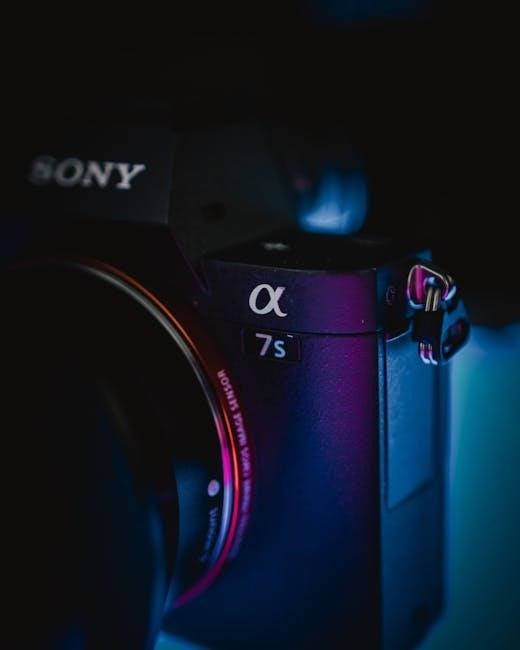
Safety Precautions
Always wear protective gear, including gloves and goggles, when painting vinyl shutters․ Work in a well-ventilated area to avoid inhaling paint fumes and ensure proper air circulation․
Working in a Well-Ventilated Area
Working in a well-ventilated area is crucial when painting vinyl shutters․ Open windows and doors to ensure airflow, reducing the concentration of paint fumes․ Avoid painting in confined or poorly ventilated spaces, as this can lead to dizziness or respiratory discomfort․ If working indoors, use fans to circulate air and speed up the drying process․ Outdoor painting is ideal, but avoid direct sunlight to prevent rapid drying, which can result in an uneven finish․ Proper ventilation not only enhances safety but also ensures a smooth, professional-looking paint job․
Using Protective Gear
Using protective gear is essential for a safe and successful vinyl shutter painting experience․ Wear gloves to prevent paint from sticking to your skin and to maintain a firm grip on tools․ Safety goggles protect your eyes from paint splatters and debris․ A dust mask is recommended when sanding or handling materials that release particles․ Long sleeves and pants can shield your skin from accidental paint spills․ Proper protective gear ensures that you can work comfortably and avoid potential health risks associated with painting materials․ By prioritizing safety, you can focus on achieving a flawless finish for your vinyl shutters․
Painting vinyl shutters is a simple way to enhance your home’s curb appeal․ Use the right paint, follow proper prep steps, and enjoy a fresh, updated look․
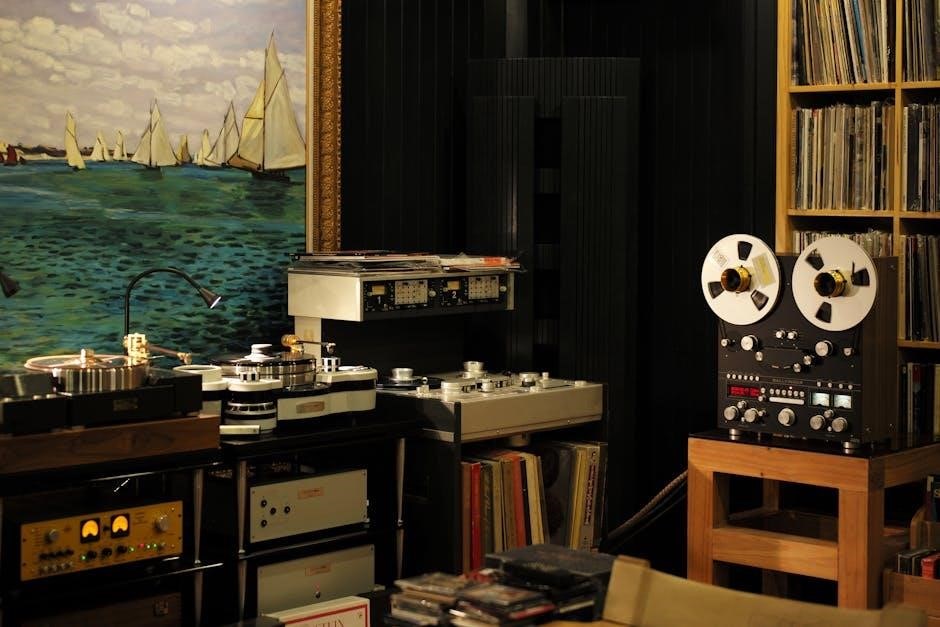
Final Tips for a Successful Paint Job
For a professional finish, ensure all surfaces are clean and dry before painting․ Use high-quality brushes or sprayers to avoid streaks and uneven coverage․ Apply thin, even coats, allowing each layer to dry completely․ Avoid painting in direct sunlight or high humidity to prevent premature drying․ Opt for acrylic latex paint specifically designed for vinyl to ensure flexibility and durability․ Lighter colors are recommended to prevent warping․ After painting, inspect for any missed spots and touch them up promptly․ Finally, reinstall the shutters carefully to avoid damaging the fresh paint․ Proper preparation and patience will yield long-lasting, beautiful results․
